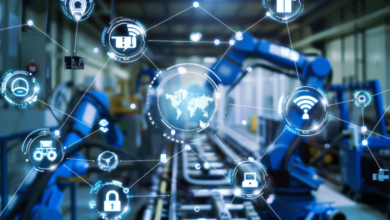
Mapping the Modern World: How Geo Services Shape Everyday Life
Most people hear geo services and think of GPS or Google Maps. That’s the shallow end of a much deeper pool. Behind the scenes, a quiet revolution has been unfolding — one that’s redrawing how we understand space, people, and connection. These systems no longer just tell you where you are. They show how movement, weather, and behaviour twist together to shape modern life.
It’s odd how invisible they’ve become. We use them a hundred times a day without a second thought — from ordering food to avoiding a traffic jam. But the real story sits beneath the surface. Geo services aren’t just a convenience. They’ve become the nervous system of a world that refuses to sit still.
Understanding What Geo Services Really Are
Think of geo services as the intersection of data and geography. They collect small signals — a delivery van’s route, a storm’s direction, a crowd’s movement — and stitch them together into something we can actually use. It’s not just dots on a map. It’s a constantly breathing system that explains why things happen where they do.
City planners lean on it to decide which neighbourhoods will need new schools. Environmental scientists use it to watch coastlines erode meter by meter. Even humanitarian agencies depend on it when roads vanish during floods. The point isn’t just location. It’s foresight. Geo services transform chaotic data into something that helps people act before problems grow teeth.
The Everyday Impact of Geo Services
It’s easy to forget how deep this technology runs in daily life. That coffee that shows up five minutes early? It’s not luck. It’s a mix of satellite data, driver tracking, and predictive routing. A farmer’s harvest depends on the same principle — watching soil maps and rain forecasts to time the season just right.
The magic here is anticipation. When a shipping route closes, algorithms reroute vessels before a dispatcher even notices. When wildfires start spreading, real-time mapping sends alerts to evacuation zones faster than the radio can. These moments happen quietly, almost invisibly, but they make the modern world move with eerie precision.
How Businesses Benefit from Smart Location Insights
For companies, the “where” question has become as critical as the “what”. A decade ago, retailers guessed. Now they measure. Using geo services, businesses can see how people move through cities — when sidewalks fill, which corners draw repeat visitors, where competitors siphon attention.
A restaurant chain won’t just look for a busy street anymore. It studies light exposure, traffic rhythms, and even what time nearby offices close. A logistics firm plans routes that adapt minute by minute, saving fuel and time. Real estate developers study migration data before buying land. These insights, once buried under spreadsheets, are now visual, immediate, and alive. Geo services turn location into logic — something you can test, not just sense.
The Technology Driving Geo Services Forward
What makes all this possible is a blend of tech that feels almost invisible until it fails. Satellites orbiting far above feed a steady stream of imagery. GPS adds precision. Then come the algorithms — some learning from years of movement data, others running on local devices to process information on the spot.
Edge computing means drones, sensors, even parked cars can analyse data without sending it across the globe first. That matters in remote or disaster-hit areas where every second counts. Combined with crowdsourced updates — a driver marking a closed bridge, a hiker noting a washed-out trail — the result is a kind of global feedback loop. A system that learns as it listens.
See also: Tunnel Radio Technology Advancements for Underground Mines
Privacy and Ethical Considerations
But there’s always a catch. Every signal, every trace of data, comes from someone. That makes privacy a moving target. Who owns your location once it’s recorded? And more importantly, what can someone deduce from it? That question haunts every developer working in this field.
The challenge isn’t just about encryption or storage. It’s about intent. How that data is interpreted, combined, and acted upon. Companies that treat transparency like a checkbox are missing the point. People don’t just want protection — they want control. The future of geo services depends on earning that trust again and again, not assuming it once.
The Future of Our Connected World
The real frontier for geo services isn’t navigation anymore. It’s a prediction. These systems are starting to read patterns in traffic, in migration, and even in weather, and guess what comes next. They’ll help decide where cities grow, how we farm in a changing climate, and what paths remain open as coastlines shift.
And yet, their greatest strength might be empathy — understanding how humans move, cluster, and survive. In a world obsessed with speed, geo services remind us that place still matters. They don’t just tell us where we are. They help us understand why we’re there — and where we might be heading next.




